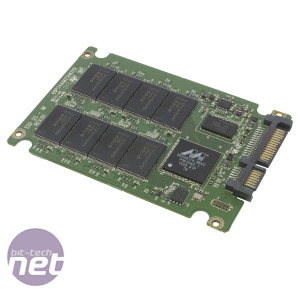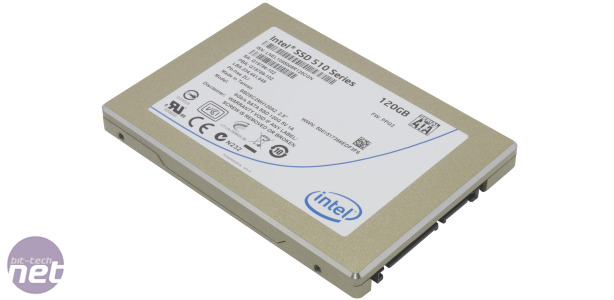Intel Solid-State Drive 510 120GB Review
Manufacturer: IntelUK Price (as reviewed): £214 (inc VAT)
US Price(as reviewed): $285 (ex tax)
Intel was one of the first manufacturers to produce consumer SSDs back in 2008, with its X25-M line managing to avoid the ‘drive stutter’ issues of the time, as well as delivering excellent performance. This was largely thanks to Intel using its own in-house drive controller hardware.
As time has passed, though, Intel’s competition has become more varied as new players have joined the market. While it’s updated its product line with 34nm NAND and revised firmware with TRIM support, Intel’s drives have remained relatively unchanged over the last two years, peaking with the X25-M Gen 2 series of SATA 3Gbps SSDs.
However, with the rapid adoption of SATA 6Gbps, not to mention the significant performance gains available from moving to the new standard, Intel has been forced into action. Its first line of SATA 6Gbps SSDs is called the Intel Solid-State Drive 510 series, codenamed Elmcrest. However, rather than produce its own drive controller hardware again, Intel has chosen to licence Marvell’s 9174 drive controller chip.
The Marvell 9174 is a proven SATA 6Gbps controller, having been used in last year’s Crucial C300 series of SSDs, as well as the Crucial M4 (review coming soon) and Corsair P3 series of SSDs. Marvell has released a number of new revisions of the controller since the C300’s launch, with Intel using the BKK2 revision of the 88SS9174 chip in the 510 series.
The differences between revisions are minor, though, and it’s the firmware behind the drive controller that determines much of an SSD’s performance. As Marvell only supplies the controller chips, it’s Intel’s proven firmware engineers who have dictated the 510’s speeds.
As with most Marvell-based SSDs, the 510 arranges its NAND across eight channels, with the density of the NAND modules used dictating performance. This means that the 250GB version should be faster than the 120GB version we review here; it also costs twice as much.


Despite using a similar Marvell drive controller to the Crucial M4, the
Intel 510 uses more expensive 34nm NAND
The 120GB version uses 16 Intel 8GB 34nm NAND chips, rather than the 25nm Micron NAND used in the Crucial M4. However, as Intel and Micron operate a partnership regarding 25nm NAND production, we expect a forthcoming revision of the 510 drive to adopt the newer 25nm NAND.
With a formatted capacity of 111GB, the 510 has been more over-provisioned than the competing M4. Over-provisioning reserves more of the NAND as a spare area, empty blocks of which are dedicated to be ready for writing, and to replace defective NAND automatically. The typical spare area on a 128GB SSD accounts for roughly 7 per cent of the drive, but the Intel 510 120GB has close to double that, with a spare area of 14 per cent. This is very much an Intel trait, as its X25-M series SSDs were also heavily over-provisioned.
The Intel 510 120GB's speeds are rated at 450MB/sec for sequential reads and 210MB/sec for sequential writes over SATA 6Gbps. These are big steps up from the Crucial C300 128GB, which is based on largely the same controller and NAND, but sequential read and write speeds of 345MB/sec and 135MB/sec respectively.
To allow for these increases, Intel admits that it has had to reduce the random read and write speeds on the drive to compensate. It looks as though there’s only a finite amount of performance available from the Marvel 9174 controller, with SSD partners divvying it out differently. The Crucial M4, for example, offers lower sequential speeds, but higher random performance.
Specifications
Interface: SATA 6GbpsNominal capacity: 120GB
Formatted capacity: 111GB
Controller: Marvell 88SS9174-BKK2
Cache: 128MB DDR3 1,333MHz
Memory type/amount: 16x Intel 8GB 34nm NAND flash
Warranty: Three years

MSI MPG Velox 100R Chassis Review
October 14 2021 | 15:04










Want to comment? Please log in.